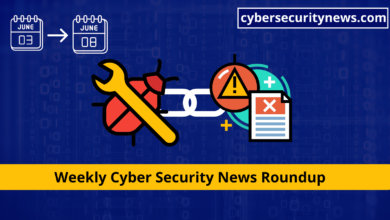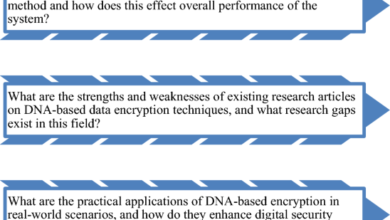What Is The Weakest Link In Cybersecurity? A Guide For Businesses

Are you aware of the weakest link in your company’s cybersecurity framework? In a world where cyber threats are evolving rapidly, understanding and addressing this vulnerable point is essential for protecting your business’s data, reputation, and bottom line.
Remember that the strength of a chain is determined by its weakest link, and in cybersecurity, this link, if not correctly fortified, can lead to catastrophic breaches. That said, this guide will thoroughly examine the different aspects that contribute to vulnerabilities in cybersecurity, providing a clear framework for businesses to enhance their security measures. To learn more, visit propeltechnology.com.
1. Human Error
Human error remains one of the most significant vulnerabilities in cybersecurity. Simple mistakes by employees, such as misdirected emails, weak passwords, or mishandling of data, can inadvertently lead to major security breaches. Businesses must invest in comprehensive training and awareness programs that are continuously updated to address new and evolving threats to combat this. This not only helps in reducing the likelihood of errors but also enhances the overall security culture within the organization.
2. Outdated Software
Outdated software can severely compromise the security of a business. Cyber attackers frequently exploit known vulnerabilities in software that has not been updated or patched. Therefore, maintaining an up-to-date system is crucial. Implementing a robust policy for regular updates and patches ensures that the business’s software defenses stay as impregnable as possible. Automating update processes and employing a dedicated team to oversee software security can further protect businesses from potential cyber-attacks.
3. Weak Passwords
Weak passwords are a common cybersecurity failure that can be easily avoided. Many breaches occur due to the use of predictable and easily guessable passwords. Establishing a strong password policy that requires complex and unique passwords is essential. Educating employees about the importance of using strong passwords and employing multi-factor authentication wherever possible can significantly strengthen a company’s security posture.
4. Inadequate Network Security
Inadequate network security can expose businesses to significant risks, especially as networks become more complex and expansive. Common network security oversights include insufficient firewall protection, poorly secured wireless networks, and the lack of segregated networks for sensitive data. Businesses should invest in advanced protection strategies such as intrusion detection systems, regular network monitoring, managed IT services, and strong end-to-end encryption for data in transit to mitigate these risks. To understand better, visit neolore.com.
5. Poor Incident Response
A poor incident response can exacerbate the impact of a security breach. An effective incident response plan is crucial for quickly identifying, containing, and mitigating any damage caused by a cyber-attack. This plan should include clear roles, responsibilities, and procedures for communicating with stakeholders and regulatory bodies. Regular drills and simulations can help prepare the incident response team for actual breach scenarios.
6. Lack of Regular Security Audits
The absence of regular security audits can leave organizations blind to evolving threats and existing weaknesses. Regular security evaluations are essential to ensure that all aspects of cybersecurity are up to the challenge. These audits should include penetration testing, vulnerability scans, and policy reviews to ensure compliance with the latest security standards and practices. Engaging a third-party cybersecurity expert for unbiased assessments can also provide valuable insights.
7. Insider Threats
Insider threats, whether malicious or accidental, pose a significant risk. These can range from employees inadvertently leaking information to deliberate acts of sabotage. Practical strategies to mitigate insider risks include implementing strict access controls, monitoring unusual activity, and conducting regular security training. It’s also essential for businesses to establish a culture of security where employees feel they can report suspicious activities without fear of retribution.
8. Limited Cybersecurity Knowledge Among Leadership
Limited cybersecurity knowledge among leadership can hinder a company’s ability to protect itself against cyber threats effectively. Leadership must be well-versed in both the potential risks and the strategic responses to cyber incidents. Offering regular cybersecurity training and briefings for senior management can help in making informed decisions that prioritize cybersecurity within the organizational strategy.
9. Unsecured Mobile Devices
Unsecured mobile devices have become a prevalent issue as the workforce becomes increasingly mobile and remote work practices expand. These devices often access corporate networks and store sensitive data without adequate security measures. Businesses should implement strict mobile device management (MDM) policies, enforce the use of virtual private network (VPN) for all connections, and ensure that all mobile devices are equipped with up-to-date security software to protect against vulnerabilities from mobile devices.
10. Lack of Data Encryption
Lack of data encryption exposes sensitive information to potential interception during its storage or transmission. Encrypting data at rest and in transit is a critical security measure that prevents unauthorized access to corporate data. Businesses should adopt strong encryption standards such as the advanced encryption standard (AES) and ensure encryption practices are applied consistently across all platforms and media.
11. Ineffective Security Training
Ineffective security training can leave employees unprepared to deal with the sophisticated cyber threats they face daily. Comprehensive and engaging security training programs are essential to build a knowledgeable workforce that can recognize and respond to cybersecurity threats effectively. Regular updates to training programs are necessary to include information on the latest threat vectors and security practices.
12. Neglecting Regular Backups
Neglecting regular backups can be disastrous, especially in the event of data breaches or ransomware attacks. Regular backups ensure that businesses can recover critical data and maintain operations with minimal downtime. Backup strategies should include regular testing to confirm that data can be restored quickly and effectively.
Conclusion
Effective cybersecurity is not solely the domain of the IT department but requires the engagement and commitment of the entire organization—from entry-level employees to top executives. Each member of the organization plays a pivotal role in fortifying the collective defense against cyber threats. Through persistent effort and strategic investment in cybersecurity measures, businesses can safeguard their assets, preserve their reputation, and ensure continuity in the digital age.



